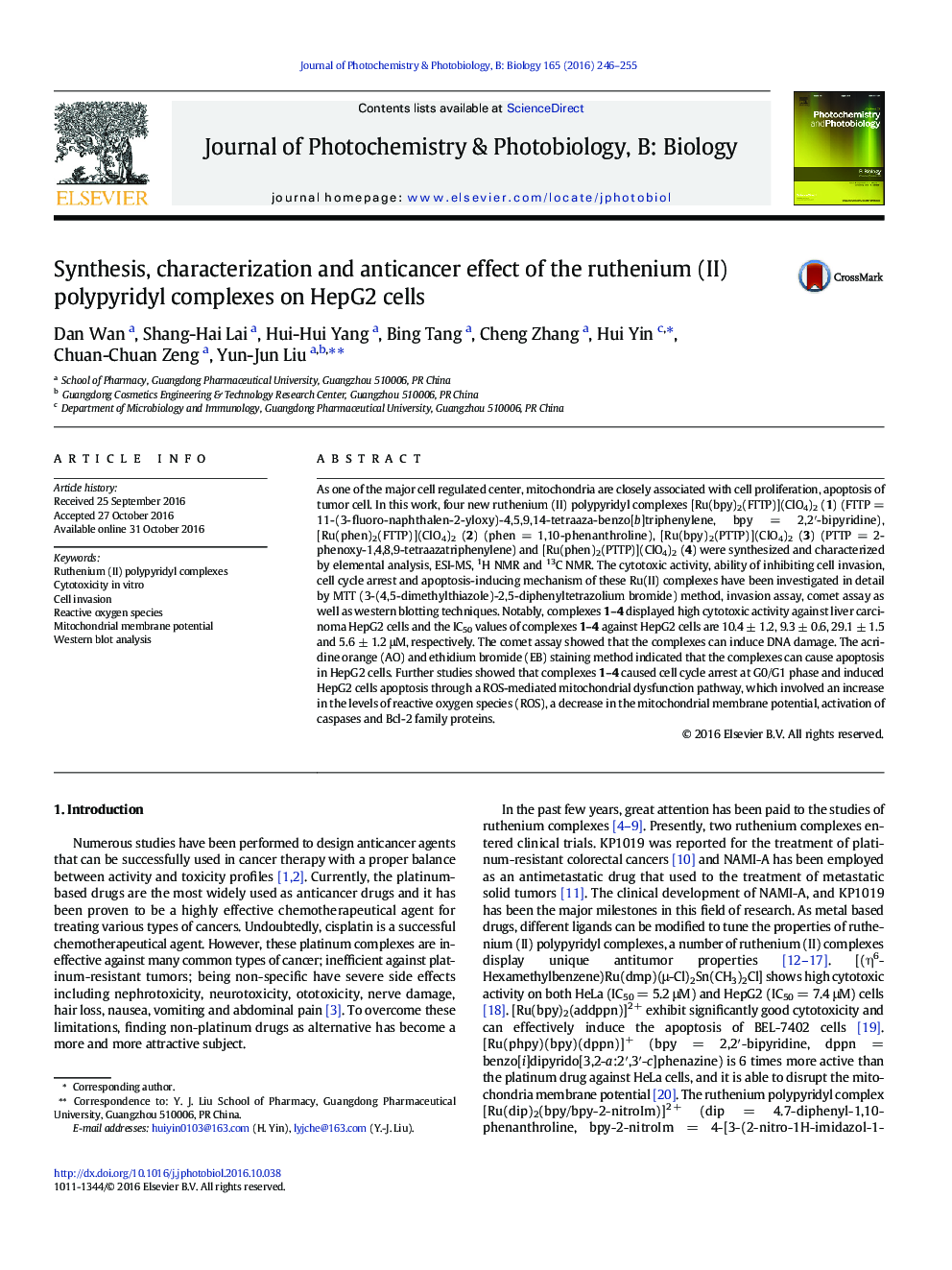| کد مقاله | کد نشریه | سال انتشار | مقاله انگلیسی | نسخه تمام متن |
|---|---|---|---|---|
| 6452601 | 1418068 | 2016 | 10 صفحه PDF | دانلود رایگان |

- Four new ruthenium (II) complexes were synthesized and characterized.
- The cytotoxicity of the complexes against five cell lines was evaluated.
- The apoptosis, comet assay, ROS and mitochondrial membrane potential were studied.
- The cell invasion was studied under fluorescent microscope.
- The cell cycle arrest and western blot analysis were investigated.
As one of the major cell regulated center, mitochondria are closely associated with cell proliferation, apoptosis of tumor cell. In this work, four new ruthenium (II) polypyridyl complexes [Ru(bpy)2(FTTP)](ClO4)2 (1) (FTTP = 11-(3-fluoro-naphthalen-2-yloxy)-4,5,9,14-tetraaza-benzo[b]triphenylene, bpy = 2,2â²-bipyridine), [Ru(phen)2(FTTP)](ClO4)2 (2) (phen = 1,10-phenanthroline), [Ru(bpy)2(PTTP)](ClO4)2 (3) (PTTP = 2-phenoxy-1,4,8,9-tetraazatriphenylene) and [Ru(phen)2(PTTP)](ClO4)2 (4) were synthesized and characterized by elemental analysis, ESI-MS, 1H NMR and 13C NMR. The cytotoxic activity, ability of inhibiting cell invasion, cell cycle arrest and apoptosis-inducing mechanism of these Ru(II) complexes have been investigated in detail by MTT (3-(4,5-dimethylthiazole)-2,5-diphenyltetrazolium bromide) method, invasion assay, comet assay as well as western blotting techniques. Notably, complexes 1-4 displayed high cytotoxic activity against liver carcinoma HepG2 cells and the IC50 values of complexes 1-4 against HepG2 cells are 10.4 ± 1.2, 9.3 ± 0.6, 29.1 ± 1.5 and 5.6 ± 1.2 μM, respectively. The comet assay showed that the complexes can induce DNA damage. The acridine orange (AO) and ethidium bromide (EB) staining method indicated that the complexes can cause apoptosis in HepG2 cells. Further studies showed that complexes 1-4 caused cell cycle arrest at G0/G1 phase and induced HepG2 cells apoptosis through a ROS-mediated mitochondrial dysfunction pathway, which involved an increase in the levels of reactive oxygen species (ROS), a decrease in the mitochondrial membrane potential, activation of caspases and Bcl-2 family proteins.
Four new Ru(II) polypyridyl complexes were synthesized and characterized. The anticancer activity was investigated by cytotoxicity in vitro, apoptosis, comet assay, ROS, mitochondrial membrane potential, cell cycle arrest, autophagy, cell invasion and western blot analysis.
Journal: Journal of Photochemistry and Photobiology B: Biology - Volume 165, December 2016, Pages 246-255